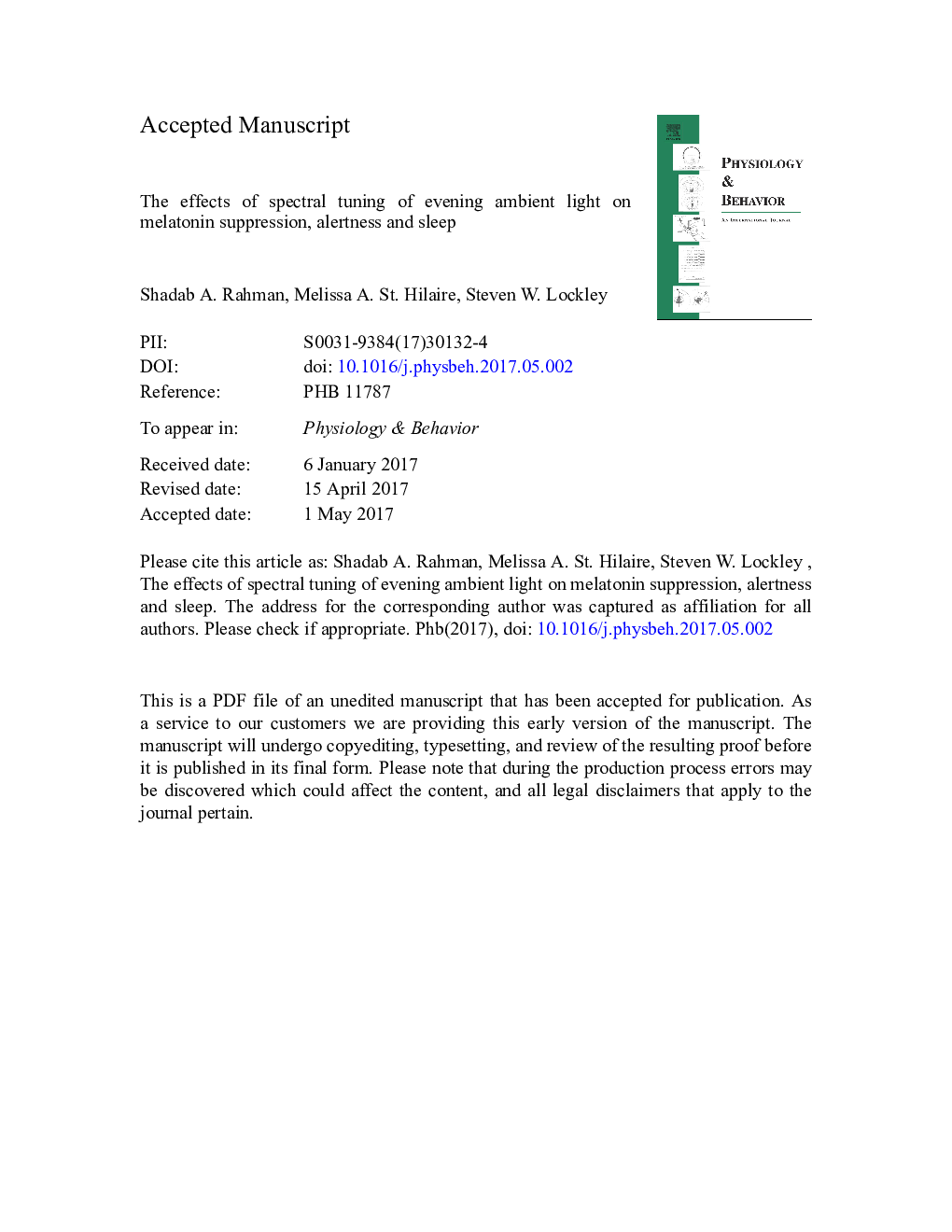| کد مقاله | کد نشریه | سال انتشار | مقاله انگلیسی | نسخه تمام متن |
|---|---|---|---|---|
| 5593745 | 1571142 | 2017 | 31 صفحه PDF | دانلود رایگان |
عنوان انگلیسی مقاله ISI
The effects of spectral tuning of evening ambient light on melatonin suppression, alertness and sleep
ترجمه فارسی عنوان
اثرات تنظیم طیفی نور محیط محیطی بر سرکوب ملاتونین، هوشیاری و خواب
دانلود مقاله + سفارش ترجمه
دانلود مقاله ISI انگلیسی
رایگان برای ایرانیان
کلمات کلیدی
سبک، طیف ملاتونین، خواب هوشیاری، دوران کودکی،
موضوعات مرتبط
علوم زیستی و بیوفناوری
بیوشیمی، ژنتیک و زیست شناسی مولکولی
فیزیولوژی
چکیده انگلیسی
We compared the effects of bedroom-intensity light from a standard fluorescent and a blue- (i.e., short-wavelength) depleted LED source on melatonin suppression, alertness, and sleep. Sixteen healthy participants (8 females) completed a 4-day inpatient study. Participants were exposed to blue-depleted circadian-sensitive (C-LED) light and a standard fluorescent light (FL, 4100Â K) of equal illuminance (50Â lx) for 8Â h prior to a fixed bedtime on two separate days in a within-subject, randomized, cross-over design. Each light exposure day was preceded by a dim light (<Â 3Â lx) control at the same time 24Â h earlier. Compared to the FL condition, control-adjusted melatonin suppression was significantly reduced. Although subjective sleepiness was not different between the two light conditions, auditory reaction times were significantly slower under C-LED conditions compared to FL 30Â min prior to bedtime. EEG-based correlates of alertness corroborated the reduced alertness under C-LED conditions as shown by significantly increased EEG spectral power in the delta-theta (0.5-8.0Â Hz) bands under C-LED as compared to FL exposure. There was no significant difference in total sleep time (TST), sleep efficiency (SE%), and slow-wave activity (SWA) between the two conditions. Unlike melatonin suppression and alertness, a significant order effect was observed on all three sleep variables, however. Individuals who received C-LED first and then FL had increased TST, SE% and SWA averaged across both nights compared to individuals who received FL first and then C-LED. These data show that the spectral characteristics of light can be fine-tuned to attenuate non-visual responses to light in humans.
ناشر
Database: Elsevier - ScienceDirect (ساینس دایرکت)
Journal: Physiology & Behavior - Volume 177, 1 August 2017, Pages 221-229
Journal: Physiology & Behavior - Volume 177, 1 August 2017, Pages 221-229
نویسندگان
Shadab A. Rahman, Melissa A. St. Hilaire, Steven W. Lockley,
